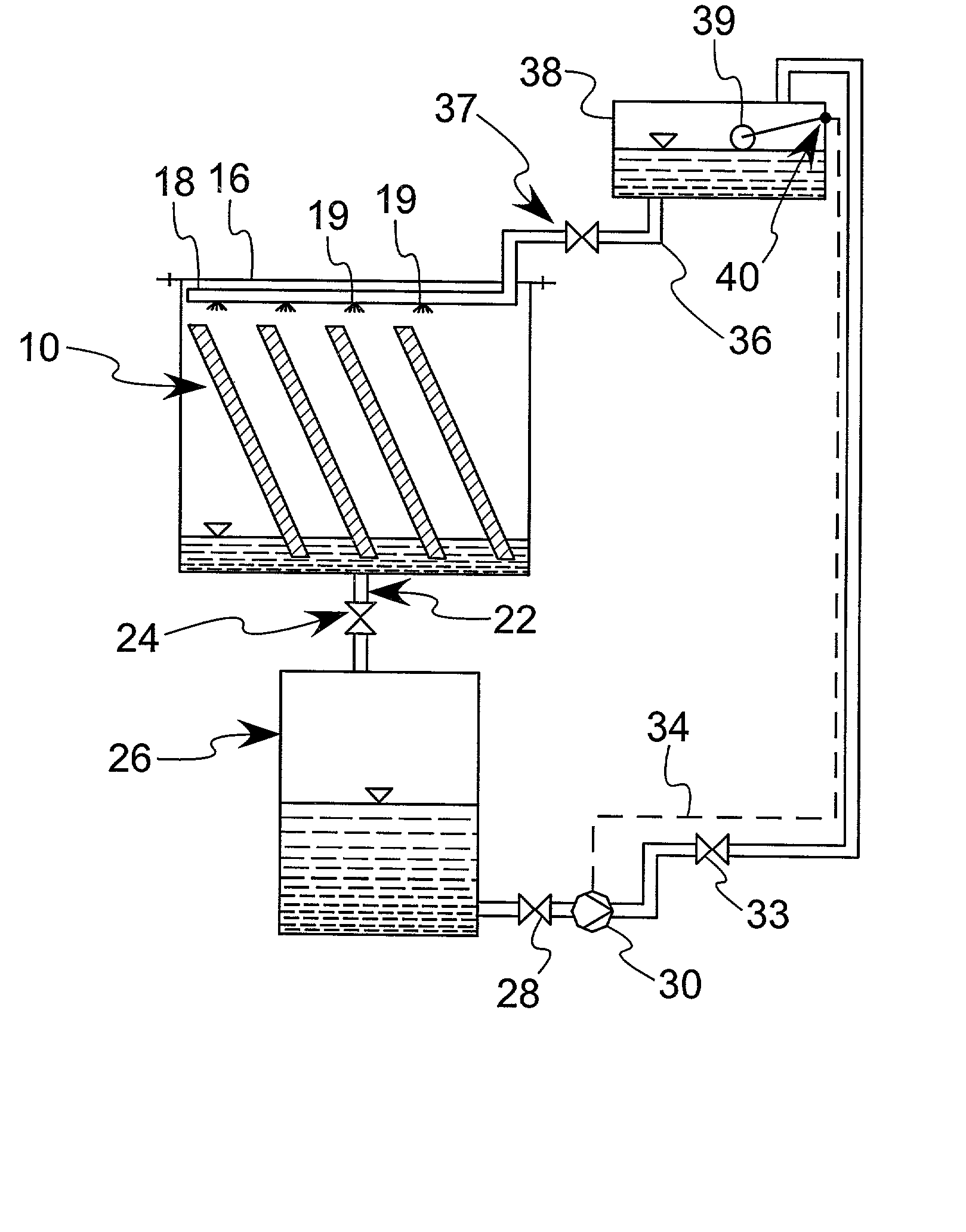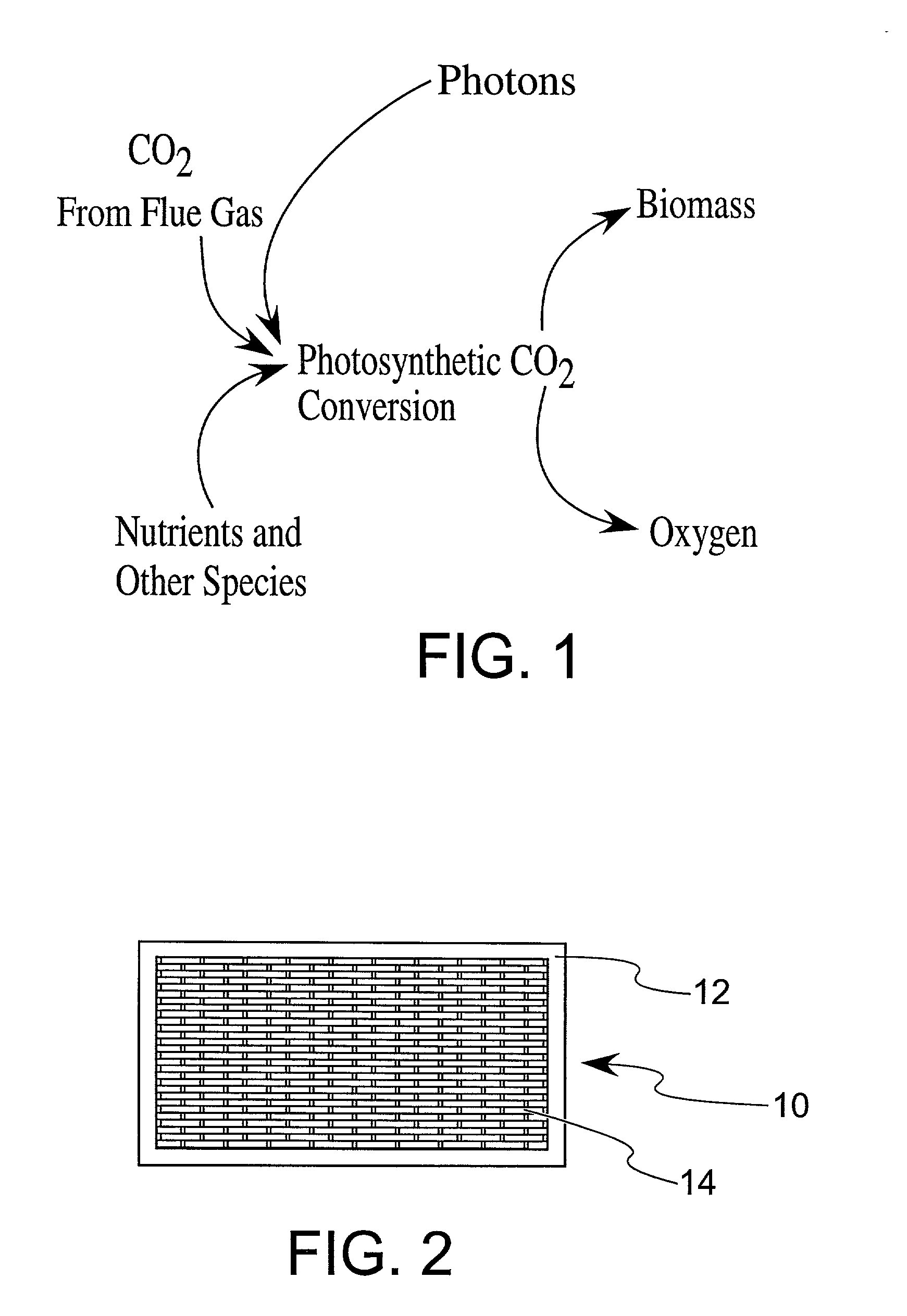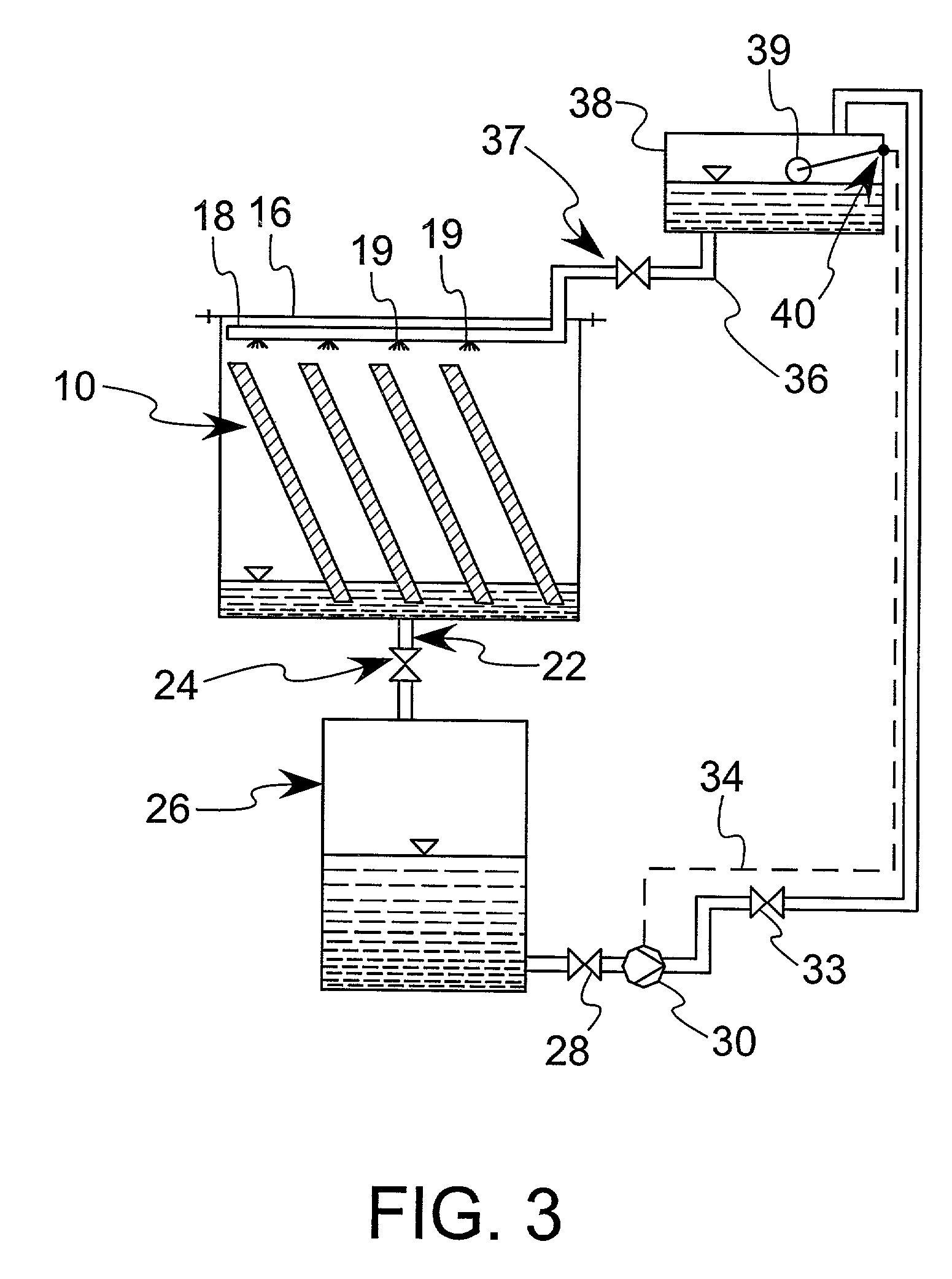Enhanced practical photosynthetic CO2 mitigation
a technology of photosynthesis and co2 mitigation, applied in the field of gas cleaning systems, can solve the problems of limited expansion options, limited consumption of co.sub.2, and difficult to achieve the effect of increasing the volume of water harvesting
- Summary
- Abstract
- Description
- Claims
- Application Information
AI Technical Summary
Benefits of technology
Problems solved by technology
Method used
Image
Examples
experiment ii
[0055] conducted at 120.degree. F. under an illumination of 22.11 .mu.mol-s.sup.-1m.sup.-2 measured at the base of the experimental containment chamber after the algae samples were loaded. Again the amount of algae samples loaded over each screen was 3000 ml giving total loading of 12000 ml in the reactor. Table 2.1 displays the weight analysis of 25 ml samples drawn through paper filters for calculation of the weight of algae for testing.
4TABLE 2.1 Dry weight analysis for test samples for Experiment II. Filter Weight before Weight after Number Volume filtering sample filtering sample Difference #1 25 ml 1.7666 gm 1.7921 gm 0.0255 gm #2 25 ml 1.7011 gm 1.7266 gm 0.0255 gm #3 25 ml 1.7402 gm 1.7668 gm 0.0266 gm #4 25 ml 1.8402 gm 1.8677 gm 0.0275 gm #5 25 ml 1.6527 gm 1.6778 gm 0.0251 gm Total = 125 ml0.1302 gm
[0056] The effective amount of algae loaded was 12.500 gm. The simulated flue gas at 120.degree. F. contained 9.5% O.sub.2, 6.0%CO.sub.2, 500ppm CO, 1.73 slpm natural gas and 2...
PUM
| Property | Measurement | Unit |
|---|---|---|
| temperature | aaaaa | aaaaa |
| temperature | aaaaa | aaaaa |
| photosynthetic surface area | aaaaa | aaaaa |
Abstract
Description
Claims
Application Information
 Login to View More
Login to View More - R&D
- Intellectual Property
- Life Sciences
- Materials
- Tech Scout
- Unparalleled Data Quality
- Higher Quality Content
- 60% Fewer Hallucinations
Browse by: Latest US Patents, China's latest patents, Technical Efficacy Thesaurus, Application Domain, Technology Topic, Popular Technical Reports.
© 2025 PatSnap. All rights reserved.Legal|Privacy policy|Modern Slavery Act Transparency Statement|Sitemap|About US| Contact US: help@patsnap.com



